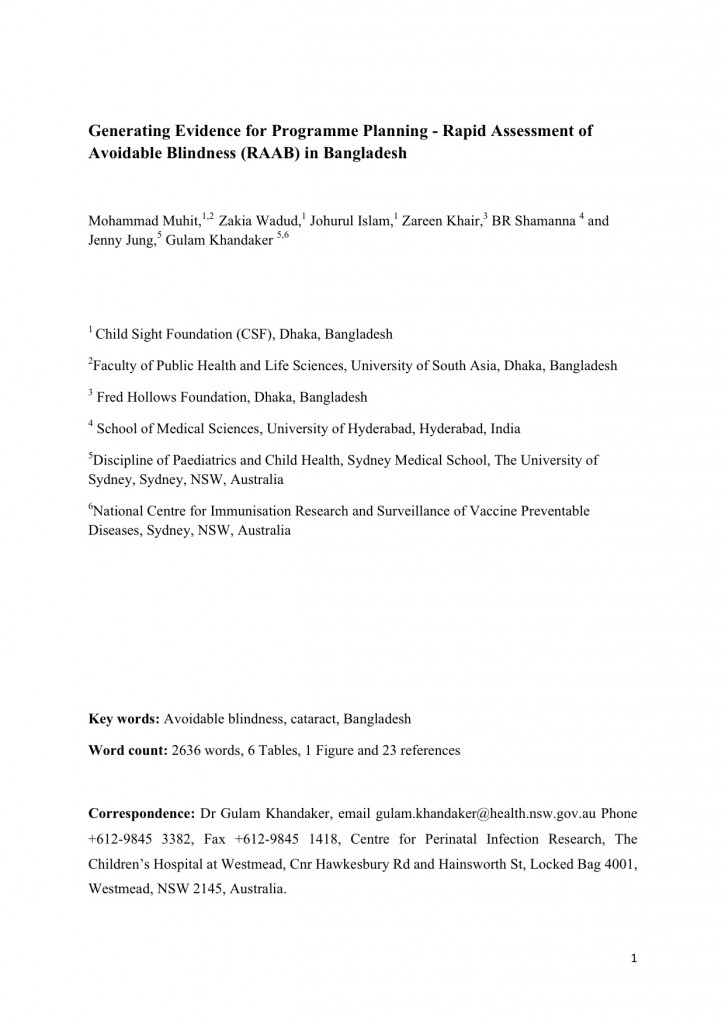Generating Evidence for Programme Planning – Rapid Assessment of Avoidable Blindness (RAAB) in Bangladesh
M. Muhit1 2, Z. Wadud1, J. Islam1, Z. Khair3, BR Shamanna4, J. Jung5, G. Khandaker5 6
1: Child Sight Foundation (CSF), Dhaka, Bangladesh; 2: Faculty of Public Health and Life Sciences, University of South Asia, Dhaka, Bangladesh; 3: Fred Hollows Foundation, Dhaka, Bangladesh; 4: School of Medical Sciences, University of Hyderabad, Hyderabad, India; 5: Discipline of Paediatrics and Child Health, Sydney Medical School, The University of Sydney, Australia; 6: National Centre for Immunisation Research and Surveillance of Vaccine Preventable Diseases, Australia.
Abstract
Introduction: There is a lack of data on the prevalence and causes of blindness in Bangladesh which is important to plan effective eye health programs and advocate support services to achieve the goals of VISION 2020: the right to sight.
Methods: Between January 2010 and December 2012 we conducted a rapid assessment of avoidable blindness (RAAB) in eight districts of Bangladesh to establish the prevalence and causes of blindness in Bangladesh. People aged ≥50 years were selected and eligible participants had their visual acuity (VA) measured. Ocular examination was performed in those with VA <6/18. Additional information was collected from those with or without cataract surgeries to understand service barriers and quality of service.
Results: In total, 21,596 people were examined of which 471 (2.2%, 95% CI 2.0–2.4%) people were blind. The primary cause of blindness was cataracts (75.8%). Majority (86.2%) of the blindness was avoidable. Cataract and refractive error was the primary cause of severe visual impairment (73.6%) and visual impairment (63.6%) respectively. The cataract surgical coverage for blind person was 69.3% (76.6% for males vs. 64.3% for females, p<0.001). The magnitude of blindness among people aged ≥50 years in Bangladesh is estimated to be 563,200 people (95% CI 512,000-614,400) of whom 426,342 people have un-operated cataract.
Conclusions: In Bangladesh, majority of blindness (86.2%) among people aged ≥50 years is avoidable, and cataract is the most important cause of avoidable blindness. Improving the cataract surgical services and refraction services would be the most important step towards the elimination of avoidable blindness in Bangladesh.
Download
Generating Evidence for Programme Planning – Rapid Assessment of Avoidable Blindness (RAAB) in Bangladesh (PDF 573KB)

